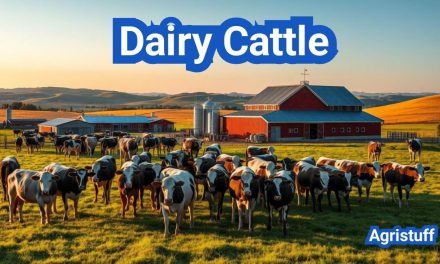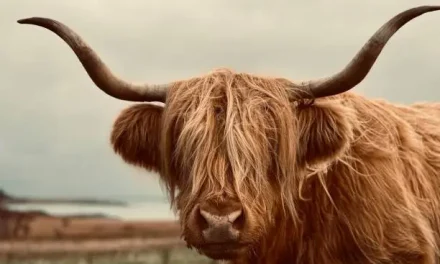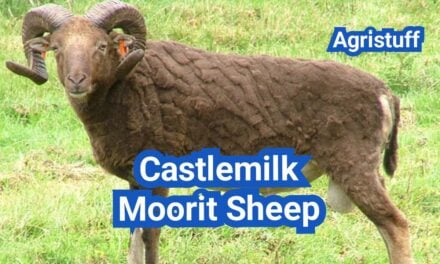The U.S. meat goat industry is experiencing significant growth, driven by increasing demand for goat meat. According to industry reports, this demand has been steadily rising over the past decade.
The importance of selecting the right breeds and implementing effective feeding plans cannot be overstated, as they directly impact the profitability of goat farming operations.
Understanding the various market channels available is also crucial for farmers looking to capitalize on the growing demand for goat meat.
Key Takeaways
- The U.S. meat goat industry is growing due to rising demand for goat meat.
- Selecting the right breeds is crucial for profitability.
- Effective feeding plans directly impact the success of goat farming operations.
- Understanding market channels is key to capitalizing on the demand for goat meat.
- Goat farming can be a profitable venture with the right strategies.
The Meat Goat Industry in the United States
The rising popularity of goat meat in various cuisines is driving the growth of the meat goat industry in the United States. As the demand for goat meat continues to increase, farmers are finding raising meat goats to be a profitable venture.
Current Status and Growth Trends
The market for goat meat in the U.S. is expanding, driven primarily by increasing demand from ethnic communities. Over the past decade, the demand for goat meat has been steadily rising, creating new opportunities for farmers in the meat goat industry.
Some key trends in the industry include:
- Increasing demand for goat meat in ethnic cuisines
- Growth in the number of meat goat farms and ranches
- Rising popularity of goat meat due to its nutritional benefits
Advantages of Raising Meat Goats
Raising meat goats can be a profitable farming venture due to several advantages:
- Low initial investment compared to other livestock
- High reproductive rate, with does able to produce multiple kids per year
- Ability to thrive on a variety of forage and in different environments
- Growing demand for goat meat, providing a stable market
Overall, the meat goat industry in the United States is poised for continued growth, driven by increasing demand for goat meat and the advantages of raising meat goats.
Understanding Meat Goat Production

Understanding the nuances of meat goat production is crucial for farmers looking to diversify their operations. Meat goat production is a specialized sector within the agricultural industry, focusing on raising goats specifically for their meat.
Meat goats are distinct from dairy and fiber goats, with specific characteristics that make them suitable for meat production. As noted by agricultural experts, “The primary goal of meat goat production is to produce high-quality meat efficiently and sustainably.”
Differences Between Meat, Dairy, and Fiber Goats
Meat goats are bred for their rapid growth rate and meat quality, whereas dairy goats are selected for their milk production, and fiber goats are raised for their mohair or cashmere.
- Meat goats are typically more muscular and have a faster growth rate than dairy or fiber goats.
- Dairy goats are bred for high milk production and often have a more refined bone structure.
- Fiber goats are valued for their soft, fine coats, which are used to produce textiles.
Key Production Traits for Profitable Operations
For a meat goat operation to be profitable, several key production traits must be considered:
- Growth rate: Goats that grow quickly to market weight are more profitable.
- Meat quality: The quality of the meat, including tenderness and flavor, affects market value.
- Fertility: Does with high fertility rates contribute to a more productive herd.
- Disease resistance: Goats with natural resistance to diseases reduce veterinary costs.
According to industry experts, “Selecting breeds with these desirable traits is essential for a successful meat goat operation.”
Goat Meat Nutritional Profile and Market Value
Goat meat is considered a lean protein, with lower fat content compared to other red meats. It is also rich in essential nutrients like iron and potassium.
| Nutrient | Value per serving |
|---|---|
| Protein | 23 grams |
| Fat | 3 grams |
| Iron | 3.5 mg |
The market value of goat meat is influenced by its nutritional profile, consumer demand, and production costs. As consumers increasingly seek leaner protein options, the demand for goat meat is expected to grow.
Top Meat Goat Breeds in the U.S.
The U.S. meat goat industry is dominated by several key breeds, each with unique characteristics that make them suitable for various production systems and market demands. Understanding these breeds is crucial for producers looking to optimize their operations and capitalize on market opportunities.
Boer Goats
Boer goats are widely recognized as the industry standard for meat goat production due to their fast growth rate and high-quality meat production. Originating from South Africa, Boer goats are known for their muscular build and white heads with red bodies. Their hardiness and adaptability make them a popular choice among producers.
Key characteristics of Boer goats include:
- Rapid growth rate
- Muscular build
- High-quality meat production
- Hardiness and adaptability
Kiko Goats
Kiko goats, developed in New Zealand, are another prominent breed in the U.S. meat goat industry. They are known for their parasite resistance and hardiness, making them an excellent choice for producers looking for low-maintenance animals. Kiko goats are also recognized for their ability to thrive in various environmental conditions.
Advantages of Kiko goats:
- Parasite resistance
- Hardiness and low maintenance
- Adaptability to different environments
Spanish Goats
Spanish goats, also known as “brush goats,” are valued for their ability to control vegetation and thrive in challenging environments. They are hardy and adaptable, making them suitable for extensive grazing systems. Spanish goats are also known for their foraging ability and resistance to certain diseases.
Characteristics of Spanish goats:
- Hardiness and adaptability
- Vegetation control capabilities
- Foraging ability
- Disease resistance
Myotonic (Tennessee Fainting) Goats
Myotonic goats, commonly referred to as “Tennessee Fainting goats,” are known for their unique condition called myotonia congenita, which causes temporary muscle stiffness. While this condition can be a concern, Myotonic goats are also valued for their meat production and hardiness. They are relatively small compared to other meat goat breeds but are known for their friendly disposition.
Key traits of Myotonic goats:
- Unique myotonia congenita condition
- Meat production capabilities
- Hardiness
- Friendly disposition
Crossbreeding Strategies for Enhanced Meat Production

To improve meat production, farmers are increasingly adopting crossbreeding strategies that combine the best traits of different breeds. Crossbreeding can be an effective strategy for improving the productivity and profitability of a meat goat operation.
Popular Crossbreeds and Their Advantages
Crossbreeding programs often focus on combining breeds that complement each other in terms of growth rate, carcass quality, and hardiness. Some of the most popular crossbreeds include Boer-Kiko, Boer-Spanish, and Kiko-Spanish crosses.
The advantages of these crossbreeds include:
- Improved growth rates: Crossbreeds often exhibit faster growth rates than purebred goats, leading to earlier market readiness.
- Enhanced hardiness: By combining breeds with different strengths, farmers can develop herds that are more resilient to environmental challenges.
- Better carcass quality: Crossbreeding can result in improved carcass characteristics, such as leaner meat and better muscling.
Boer-Kiko Crosses
The Boer-Kiko cross is particularly popular among meat goat producers. Boer goats are known for their rapid growth rate and muscular build, while Kiko goats are prized for their hardiness and parasite resistance.
The benefits of Boer-Kiko crosses include:
- Hybrid vigor: The cross often results in offspring that are more vigorous and robust than either parent breed.
- Improved market weight: Boer-Kiko kids tend to reach market weight more quickly than purebred kids.
- Enhanced maternal traits: Kiko dams are known for their strong mothering abilities, which are passed on to their crossbred offspring.
Selecting Breeding Stock for Hybrid Vigor
To maximize the benefits of crossbreeding, it’s crucial to select breeding stock carefully. Farmers should focus on selecting animals with complementary traits that will enhance hybrid vigor in the offspring.
Key considerations when selecting breeding stock include:
- Genetic diversity: Choosing breeds or lines that are genetically distinct can enhance hybrid vigor.
- Production traits: Selecting for traits such as growth rate, fertility, and disease resistance can improve overall herd performance.
- Adaptability: Ensuring that the breeding stock is well-adapted to the local environment is crucial for the success of the crossbreeding program.
How to Choose the Right Meat Goat Breed for Your Farm
Choosing the right meat goat breed requires careful consideration of several key factors. The decision impacts your farm’s productivity, profitability, and overall success.
Climate and Environmental Considerations
The climate and environmental conditions on your farm play a crucial role in determining the most suitable meat goat breed. Some breeds are more adaptable to certain conditions than others.
Climate-resilient breeds are essential for farms in areas with extreme temperatures or weather conditions. For instance, breeds like the Boer and Kiko are known for their hardiness and ability to thrive in various climates.
| Breed | Climate Adaptability | Key Characteristics |
|---|---|---|
| Boer | High | Fast growth rate, muscular build |
| Kiko | High | Hardiness, parasite resistance |
| Myotonic | Moderate | Muscling, unique characteristics |
Production Goals Assessment
Your production goals are another critical factor in choosing a meat goat breed. Are you focusing on producing high-quality meat, or do you aim to breed and sell breeding stock?
Breeds like the Boer are renowned for their fast growth rate and are often used in crossbreeding programs to enhance meat production.
Space and Resource Limitations
The amount of space and resources available on your farm can significantly influence your choice of breed. Some breeds require more space or specific resources.
For example, breeds that are more forage-efficient might be preferable for farms with limited grazing land.
Market Demand Analysis
Understanding the market demand for different types of goat meat or breeding stock is vital. Certain breeds may be more in demand in specific markets.
For instance, some ethnic markets prefer larger goats, while others may demand specific characteristics or qualities.
By carefully considering these factors—climate, production goals, space and resources, and market demand—you can make an informed decision when choosing a meat goat breed for your farm.
Setting Up Essential Housing and Fencing for Meat Goats

Effective housing and fencing systems are essential for safeguarding meat goats from predators and environmental stressors. Adequate shelter and secure fencing not only protect the goats but also contribute to their overall health and productivity.
Shelter Requirements and Design
Meat goats require shelter that protects them from extreme weather conditions such as intense sunlight, heavy rainfall, and cold winds. The shelter design should ensure good ventilation to prevent respiratory issues.
A well-designed shelter can be achieved with relatively simple structures. For instance, a three-sided shelter can be an effective and cost-efficient option. The open side should face away from prevailing winds to minimize the impact of harsh weather.
Fencing Options and Installation
Fencing is a critical component of meat goat farming, serving as a barrier against predators and preventing the goats from escaping. There are several fencing options available, each with its advantages and disadvantages.
| Fencing Type | Cost | Durability | Effectiveness |
|---|---|---|---|
| High-Tensile Wire | Moderate | High | Excellent |
| Wooden Fencing | High | Moderate | Good |
| Electric Fencing | Low | Moderate | Good |
Predator Protection Strategies
Predator protection is a significant concern for meat goat farmers. Common predators include coyotes, wolves, and domestic dogs. Effective predator protection strategies are crucial to prevent losses.
“Guard animals such as donkeys and llamas can be used to deter predators. Additionally, using fencing materials that are difficult for predators to breach, such as high-tensile wire, can enhance security.”
Implementing a combination of these strategies can significantly reduce the risk of predation. Regular inspection of fencing and shelter is also essential to ensure that they remain effective.
Developing Comprehensive Meat Goat Feeding Plans

A well-designed nutrition plan is essential for maintaining healthy and productive meat goats. Effective feeding strategies play a critical role in ensuring optimal growth rates, reproductive health, and overall herd productivity.
Nutritional Requirements at Different Life Stages
Meat goats have varying nutritional needs at different stages of their life cycle. Kids require high-protein diets to support rapid growth and development. Pregnant and lactating does need adequate nutrition to maintain their health and support fetal development or milk production.
For instance, during the kidding season, does require a nutrient-rich diet to support both their health and the production of high-quality colostrum and milk for their kids. As kids grow, their dietary needs change, necessitating adjustments in feeding programs.
Forage-Based Feeding Programs
Forage is a critical component of meat goat diets, providing essential nutrients and helping to maintain gut health. High-quality forages such as pasture grasses, hay, and silage can form the basis of a cost-effective feeding program.
Rotational grazing is a key strategy in forage-based feeding, allowing pastures to recover and maintaining their productivity over time. This approach also helps in managing parasite loads by breaking the parasite life cycle.
Supplemental Feeding Strategies
While forage is a mainstay of meat goat diets, supplemental feeding is often necessary to ensure that nutritional needs are fully met, particularly during periods of high demand or when forage quality is poor.
Grains and concentrates can be used to supplement forage, providing additional energy and protein. The choice of supplement will depend on the specific needs of the goats, the quality of the available forage, and economic considerations.
Feed Cost Management Techniques
Managing feed costs is crucial for the profitability of meat goat operations. Strategies include optimizing forage production, selecting cost-effective supplements, and minimizing waste.
Producers can also consider alternative feed sources, such as crop residues or by-products from other agricultural operations, to reduce costs. Implementing efficient feeding systems that minimize waste and ensure that goats have access to the nutrients they need is also important.
Implementing Rotational Grazing Systems for Meat Goats

Rotational grazing offers numerous benefits for meat goat farmers, including improved forage utilization and reduced environmental impact. By dividing pastures into smaller sections, farmers can manage grazing more effectively, leading to healthier pastures and more productive goats.
Advantages of Rotational Grazing
Rotational grazing provides several key benefits for meat goat operations. It allows for more efficient use of pasture resources, reduces soil erosion, and promotes biodiversity. This method also helps in managing parasites by breaking their life cycle through periodic removal of goats from infested areas.
Key Benefits:
- Increased forage production
- Improved soil health
- Better parasite control
- Enhanced biodiversity
Setting Up Paddocks and Infrastructure
To implement rotational grazing, farmers need to divide their pastures into paddocks. The size and number of paddocks depend on factors like the number of goats, available forage, and the desired rotation period. Fencing is a critical component, with options ranging from permanent to temporary electric or barbed wire fences.
Managing Grazing Rotation Schedules
Effective rotational grazing requires a well-planned rotation schedule. This involves moving goats to a new paddock before the current one is overgrazed. The rotation period depends on factors like forage growth rate, weather conditions, and the number of animals.
| Rotation Period | Forage Condition | Goat Health Impact |
|---|---|---|
| Short (1-3 days) | High quality, less quantity | Improved nutrition, potential for increased parasite issues if not managed |
| Medium (3-7 days) | Balanced quality and quantity | Optimal health, reduced parasite load |
| Long (7+ days) | More quantity, variable quality | Potential for overgrazing, reduced nutritional intake |
Forage Selection for Maximum Productivity
Choosing the right forage species is crucial for the success of a rotational grazing system. Factors to consider include climate, soil type, and the nutritional needs of the goats. A mix of grasses and legumes can provide a balanced diet and improve soil fertility.
Popular Forage Options:
- Bermudagrass
- Fescue
- Clover
- Rye
Effective Parasite Control in Meat Goat Herds

Effective management of parasites is essential for the success of meat goat farming operations. Parasites can significantly impact the health and productivity of goat herds, leading to reduced weight gain, lower fertility rates, and increased mortality.
Common Internal and External Parasites
Meat goats are susceptible to various internal and external parasites. Internal parasites include Haemonchus contortus (barber pole worm), Teladorsagia, and Trichostrongylus species, which can cause significant gastrointestinal distress and anemia.
External parasites such as lice, ticks, and flies can also have a detrimental effect on goat health, causing discomfort, transmitting diseases, and leading to secondary infections.
Prevention Methods and Management Practices
Preventing parasite infestations is crucial for maintaining a healthy herd. Effective management practices include:
- Implementing rotational grazing to reduce parasite loads in pastures
- Monitoring parasite levels through regular fecal egg counts
- Maintaining clean living conditions and providing adequate nutrition
- Selecting parasite-resistant breeds or lines
Treatment Options and Protocols
When parasite infestations occur, effective treatment is necessary. Treatment options include:
- Anthelmintic medications for internal parasites
- Insecticides for external parasites
It’s essential to develop a treatment protocol that includes monitoring for resistance and rotating between different classes of medications to maintain their efficacy.
Developing a Parasite Control Program
A comprehensive parasite control program should be tailored to the specific needs of the farm, taking into account factors such as climate, pasture management, and goat breed. The program should include regular monitoring, strategic treatment, and ongoing evaluation to ensure its effectiveness.
By implementing effective parasite control measures, meat goat producers can improve the health and productivity of their herds, leading to increased profitability and sustainability.
Kid Management from Birth to Market Weight
Kid management practices play a significant role in determining the overall health and productivity of meat goats. Effective management from birth to market weight is crucial for maximizing profitability and ensuring the sustainability of meat goat farming operations.
Kidding Season Preparation
Preparing for kidding season is a critical step in kid management. Farmers should ensure that they have a clean and safe environment for the does to kid. This includes providing adequate shelter, nutritional support, and monitoring the health of the does in the final stages of pregnancy.
Nutritional Support: Ensuring that pregnant does receive proper nutrition is vital for the health of both the doe and the kids. A well-balanced diet that includes necessary vitamins and minerals will help prevent complications during kidding.
Newborn Care Practices
Newborn care is essential for the survival and health of kids. Immediately after birth, kids should be dried and ensured to receive colostrum, which provides them with initial immunity.
- Ensure kids receive colostrum within the first hour of birth.
- Monitor kids for any signs of illness or distress.
- Provide a clean and warm environment for newborn kids.
Weaning Strategies
Weaning is a critical phase in kid management that requires careful planning. The weaning process should be gradual to minimize stress on the kids.
Gradual Weaning: Start by separating the kids from their mothers for short periods and gradually increase the duration over time. This helps in reducing stress and promoting a healthier transition.
Growth Management for Market Readiness
After weaning, the focus shifts to growth management to ensure that kids reach market weight efficiently. This involves providing a balanced diet and monitoring their health and growth rates.
| Age | Nutritional Requirements | Health Checks |
|---|---|---|
| 0-3 months | Colostrum, milk replacer | Daily monitoring for illness |
| 3-6 months | Gradual introduction to solid feed | Regular health checks |
By implementing these kid management practices, farmers can improve the health and productivity of their meat goat herds, ultimately enhancing their profitability and sustainability.
Health Management for Meat Goat Herds

A comprehensive health management program is essential for preventing disease in meat goat herds. Effective health management practices not only improve the overall well-being of the animals but also contribute to the profitability and sustainability of the farming operation.
Vaccination Schedules and Protocols
Developing an appropriate vaccination schedule is a critical component of health management. The specific vaccines required can vary depending on factors such as the region, farm size, and disease prevalence. Common vaccinations for meat goats include those for Clostridium species and Booster vaccinations.
It’s essential to work with a veterinarian to determine the most effective vaccination protocol for your herd. Regular vaccinations can significantly reduce the risk of disease outbreaks.
Disease Prevention Strategies
Disease prevention involves a multi-faceted approach, including biosecurity measures, parasite control, and nutritional management. Implementing strict biosecurity protocols can help prevent the introduction and spread of diseases within the herd.
Disease Prevention Measures:
- Quarantine new animals before introducing them to the herd.
- Use proper sanitation and hygiene practices.
- Monitor animal health regularly.
- Maintain adequate nutrition and living conditions.
Herd Health Monitoring Systems
Regular monitoring of the herd’s health is vital for early detection of diseases. This involves observing animal behavior, checking for signs of illness, and maintaining detailed health records.
| Health Parameter | Monitoring Frequency | Action Threshold |
|---|---|---|
| Body Condition Score | Monthly | Score |
| Fecal Egg Count | Quarterly | > 500 epg |
| Vaccination Status | Pre-breeding season | Outdated vaccinations |
Working with Veterinarians
Collaborating with a veterinarian is crucial for developing and implementing an effective health management program. Veterinarians can provide valuable guidance on vaccination protocols, disease diagnosis, and treatment options.
By integrating these health management practices, meat goat farmers can improve the health and productivity of their herds, ultimately enhancing the sustainability and profitability of their operations.
Exploring Meat Goat Market Channels

Exploring the diverse market channels available is crucial for meat goat producers to maximize their profits. The meat goat industry offers a range of marketing opportunities, from traditional livestock auctions to direct sales to consumers and ethnic markets.
Traditional Livestock Auctions
Livestock auctions have long been a staple in the meat goat industry, providing a platform for producers to sell their animals to a wide range of buyers. These auctions can offer competitive pricing, but producers must be aware of the commission fees and other costs associated with auction sales.
Benefits of Livestock Auctions:
- Wide exposure to potential buyers
- Competitive pricing
- Convenient for selling larger numbers of animals
Direct Marketing to Consumers
Direct marketing allows producers to sell their products directly to consumers, potentially increasing profit margins. This can be achieved through farm stands, farmers’ markets, or online platforms.
Advantages of Direct Marketing:
- Higher profit margins due to reduced intermediary costs
- Direct customer feedback and relationship building
- Ability to promote the product’s unique qualities
Ethnic Market Opportunities
Ethnic markets, particularly those catering to Hispanic and Caribbean communities, present significant opportunities for meat goat producers. These cultures have a high demand for goat meat, and producers can capitalize on this demand by tailoring their marketing efforts accordingly.
Key Considerations for Ethnic Markets:
- Understand the cultural and culinary preferences of the target ethnic group
- Ensure product quality and consistency meet the market’s standards
- Develop marketing strategies that resonate with the target audience
Working with Processors and Butchers
Building relationships with processors and butchers is crucial for meat goat producers who wish to sell their products through various retail channels. These partners can help in customizing the product to meet consumer demands.
| Partner Type | Role | Benefits |
|---|---|---|
| Processors | Convert live goats into market-ready products | Value-added products, increased market reach |
| Butchers | Retail sales, product customization | Direct consumer sales, product promotion |
By diversifying their market channels, meat goat producers can reduce their dependence on a single market, thereby enhancing the resilience and profitability of their operations.
Developing a Meat Goat Enterprise Budget

To ensure financial stability, meat goat producers must develop a detailed enterprise budget. This comprehensive financial plan will help farmers make informed decisions, manage resources effectively, and achieve profitability.
Initial Investment and Startup Costs
Startup costs are a critical component of the enterprise budget. These initial expenses include purchasing breeding stock, infrastructure development, and equipment acquisition.
- Breeding stock: The cost of initial goat purchases, which can vary based on breed, quality, and quantity.
- Infrastructure: Fencing, shelter, and other facilities necessary for goat housing and management.
- Equipment: Feeders, waterers, and other essential equipment for daily operations.
| Startup Cost Category | Estimated Cost |
|---|---|
| Breeding Stock (100 goats) | $15,000 – $30,000 |
| Fencing (10 acres) | $3,000 – $5,000 |
| Shelters and Facilities | $5,000 – $10,000 |
| Equipment | $2,000 – $3,000 |
| Total Estimated Startup Costs | $25,000 – $48,000 |
Ongoing Operational Expenses
Ongoing operational expenses are recurring costs that meat goat producers must consider when developing their enterprise budget. These expenses include feed, veterinary care, and marketing.
- Feed: The cost of hay, grains, and other nutritional supplements for the goats.
- Veterinary Care: Expenses related to vaccinations, parasite control, and other health management practices.
- Marketing: Costs associated with promoting and selling meat goats or their products.
Revenue Projections and Pricing Strategies
Revenue projections are essential for determining the financial viability of a meat goat enterprise. Producers must consider market demand, pricing strategies, and potential revenue streams.
Market Demand: Understanding the demand for meat goats or goat meat in the target market is crucial for setting realistic revenue projections.
Pricing Strategies: Producers can adopt various pricing strategies, such as competitive pricing or value-based pricing, to maximize their revenue.
Break-even Analysis
A break-even analysis is a critical tool for determining when a meat goat enterprise will become profitable. It involves calculating the point at which total revenue equals total fixed and variable costs.
By carefully developing a comprehensive enterprise budget, meat goat producers can better manage their finances, make informed decisions, and achieve long-term sustainability.
Creating a Small Farm Business Plan for Meat Goats
A comprehensive business plan is the foundation upon which a successful small meat goat farm is built. It serves as a roadmap, guiding farmers through the complexities of establishing and maintaining a profitable operation.
Setting Realistic Production Goals
Setting realistic production goals is crucial for the success of a meat goat farm. This involves understanding the farm’s capacity, the breed’s productivity, and market demand.
- Determine the number of does to breed annually
- Estimate kid production rates
- Plan for growth rates and market readiness
For instance, a farm might aim to produce 100 kids per year. To achieve this, they would need to breed a certain number of does, taking into account factors like fertility rates and kidding seasons.
Marketing Strategy Development
Developing an effective marketing strategy is vital for selling meat goat products. This involves identifying target markets, understanding consumer preferences, and creating a brand identity.
| Marketing Channel | Target Audience | Potential Revenue |
|---|---|---|
| Direct Sales | Local Consumers | $10,000 |
| Livestock Auctions | Processors, Buyers | $8,000 |
| Ethnic Markets | Cultural Communities | $12,000 |
Risk Management Considerations
Meat goat farming comes with several risks, including disease outbreaks, market fluctuations, and environmental challenges. A robust business plan must include strategies for mitigating these risks.
Risk Management Strategies:
- Diversifying income streams
- Implementing biosecurity measures
- Monitoring market trends
Scaling Your Operation
As the farm grows, it’s essential to plan for scaling the operation. This might involve expanding infrastructure, increasing the herd size, or exploring new markets.
Key considerations for scaling include:
- Assessing financial readiness
- Evaluating market demand
- Developing a phased growth plan
Building a Successful and Sustainable Meat Goat Operation
Building a successful and sustainable meat goat operation requires careful planning, effective management practices, and a commitment to sustainability. By understanding the meat goat industry trends and implementing best practices, producers can capitalize on the growing demand for goat meat.
A successful meat goat operation involves selecting the right breed for your farm, developing comprehensive feeding plans, and implementing rotational grazing systems. It also requires effective parasite control, kid management, and health management practices.
Sustainable farming practices, such as rotational grazing and forage-based feeding programs, can help maintain the long-term viability of your operation while minimizing its environmental impact. By staying informed about meat goat industry trends and adapting to changing market conditions, producers can ensure the success and sustainability of their operation.
Ultimately, a well-managed meat goat operation can provide a profitable and sustainable source of income for farmers and ranchers in the United States.
FAQ
What are the most popular meat goat breeds in the U.S.?
The most popular meat goat breeds in the U.S. include Boer, Kiko, Spanish, and Myotonic goats, known for their hardiness, growth rate, and meat quality.
What are the advantages of raising meat goats?
Raising meat goats offers several advantages, including their potential for profitability, growing demand for goat meat, and relatively low startup costs compared to other livestock.
How do I choose the right meat goat breed for my farm?
To choose the right meat goat breed, consider factors such as climate, production goals, available space and resources, and market demand to ensure the best fit for your operation.
What are the key components of a comprehensive meat goat feeding plan?
A comprehensive meat goat feeding plan should include nutritional requirements at different life stages, forage-based feeding programs, supplemental feeding strategies, and feed cost management techniques.
How can I effectively control parasites in my meat goat herd?
Effective parasite control involves understanding common internal and external parasites, implementing prevention methods, using appropriate treatment options, and developing a parasite control program tailored to your herd’s needs.
What are the benefits of rotational grazing for meat goats?
Rotational grazing offers several benefits, including improved forage utilization, reduced parasite loads, and increased overall productivity of the grazing land.
How do I manage kid care from birth to market weight?
Kid management involves kidding season preparation, proper newborn care, effective weaning strategies, and growth management to ensure kids are ready for market at the appropriate weight.
What health management practices are essential for meat goat herds?
Essential health management practices include vaccination schedules, disease prevention strategies, herd health monitoring, and collaboration with veterinarians to maintain a healthy herd.
What market channels are available for selling meat goats?
Meat goats can be sold through traditional livestock auctions, direct marketing to consumers, ethnic market opportunities, and by working with processors and butchers.
How do I develop a meat goat enterprise budget?
Developing a meat goat enterprise budget involves calculating startup costs, ongoing operational expenses, revenue projections, and conducting a break-even analysis to ensure the financial viability of your operation.
What should be included in a small farm business plan for meat goats?
A small farm business plan for meat goats should include setting realistic production goals, marketing strategy development, risk management considerations, and plans for scaling your operation.
Is goat meat considered red meat?
Yes, goat meat is considered red meat and is known for its nutritional profile, including being a good source of protein, vitamins, and minerals.
How does goat meat compare to lamb or mutton?
Goat meat, lamb, and mutton are all considered red meats, but they come from different animals and have different flavor profiles and nutritional content. Goat meat is often leaner than lamb or mutton.
What are the nutritional benefits of goat meat?
Goat meat is a nutritious choice, offering a good balance of protein, vitamins, and minerals, and is often lower in fat compared to other red meats.
Can I raise meat goats on a small farm?
Yes, meat goats can be raised on small farms, provided you have adequate space, appropriate fencing, and a well-planned management strategy.
What are the most productive meat goat breeds?
Breeds like Boer, Kiko, and their crosses are known for their productivity in terms of growth rate and meat production.
How do I get started with raising meat goats?
Getting started involves choosing the right breed, developing a business plan, acquiring necessary infrastructure, and learning about goat husbandry and management practices.
Conclusion of: Meat Goats in the U.S.
Introduction: Why meat goat production fits U.S. farms
Starting a meat goat enterprise in the United States is an attractive option for small and mid-size farms, homesteads, and diversified operations. A well-managed meat goat herd can convert brush, weeds, and low-value pasture into high-value protein, while fitting comfortably on limited acreage and working alongside cattle or sheep.
Demand for meat goat products is growing in many U.S. cities, driven by culturally diverse consumers, chefs looking for new flavors, and interest in grass-based meats. For landowners who want livestock that can help with vegetation control and generate saleable kids each year, the meat goat enterprise can be a flexible and scalable business. USDA APHIS animal health overview for sheep and goats
Understanding U.S. demand and price patterns for meat goat products
Before you buy your first meat goat, it helps to understand how demand and prices behave in the U.S. market. Goat meat consumption is heavily influenced by cultural and religious holidays such as Easter, Ramadan, and Eid, as well as by local festivals and family events.
Many communities prefer lighter, younger meat goat kids for special occasions, while restaurants and specialty butcher shops may order heavier carcasses year-round. Because domestic production does not always match demand, the U.S. continues to import significant volumes of frozen goat meat, which opens the door for efficient domestic meat goat producers to compete on freshness and quality. USDA NIFA information on U.S. small ruminant markets
Main meat goat breeds used in the United States
Choosing the right meat goat breed is one of the first strategic decisions you will make. In the U.S., common meat goat genetics include Boer, Kiko, Spanish, Myotonic (fainting goats), and various crossbreds. Boer meat goat lines are known for rapid growth and heavy muscling, which makes them popular for commercial kids and show animals.
Kiko meat goat genetics are often valued for hardiness, strong mothering ability, and good growth on forage. Spanish meat goat types, which developed under rugged conditions in the southern U.S., are recognized for browsing ability and parasite tolerance. Many farms rely on crossbred meat goat does to capture hybrid vigor and combine the strengths of multiple breeds. Penn State Extension – Meat goat production overview
Matching meat goat breeds to climate, forage, and business goals
Not every meat goat breed is ideal for every farm, so it is important to match genetics to your environment and your marketing plan. In hot, humid regions where internal parasites are a constant challenge, producers often emphasize Kiko, Spanish, or crossbred meat goat does with proven resistance and good feet and legs. In drier climates, Boer-influenced meat goat herds can thrive on range conditions as long as they receive proper nutrition and health care.
If your primary goal is to raise show wethers or breeding stock, you may focus on high-quality, registered meat goat animals and invest more in individual care. For a commercial meat goat operation selling groups of kids each year, practical traits like kidding ease, growth rate, and mothering ability usually matter more than extreme appearance. Goats.extension.org – National portal for meat goat production resources
Facilities, housing, and fencing for a safe meat goat herd
A productive meat goat herd does not require an expensive barn, but it does need secure, functional facilities. At minimum, goats need a dry, draft-free shelter for severe weather, shade during hot seasons, and a safe place for kidding. Strong fencing is essential because a meat goat is curious, agile, and willing to test weak spots; woven wire, stock panels, or well-designed electric fencing are common choices.
Many producers divide pastures with cross-fencing so meat goat groups can be rotated to fresh forage while rested paddocks recover. Simple handling facilities—such as a small pen, alley, and head gate or working chute—will make vaccinations, hoof trimming, and weighing much easier as your meat goat numbers grow. Maryland Small Ruminant Page – Housing and facilities for small ruminants
Grazing, browsing, and pasture planning for meat goat herds
Because a meat goat is naturally a browser, it prefers shrubs, woody plants, and many broadleaf weeds rather than just grass. This behavior makes meat goat herds valuable tools for brush control along fence lines, woodland edges, and overgrown pastures.
A rotational grazing plan that moves meat goat groups regularly between paddocks helps protect desirable plants, reduce soil erosion, and limit parasite exposure. Many producers integrate meat goat herds with cattle or sheep to improve pasture utilization, since each species selects different plants. When planning stocking rates, it is important to match meat goat numbers to the long-term carrying capacity of your land, rather than chasing short-term gain at the expense of pasture health. Mississippi State University Extension – Forage and grazing resources
Basic nutrition requirements for a healthy meat goat herd
Every meat goat needs a balanced diet built on four pillars: good forage, clean water, appropriate supplements, and careful management. High-quality pasture or hay should be the foundation of a meat goat feeding plan, because goats are ruminants designed to ferment fibrous plants in the rumen. When forage quality or quantity is limited, producers can add concentrates such as grain mixes to meet energy and protein needs, especially for growing kids and lactating does.
Free-choice mineral formulated for sheep and goats is important to supply essential trace elements without excessive copper, and fresh water must always be available. By regularly checking body condition scores and adjusting rations, you can keep each meat goat class on track for growth and reproduction targets. NC State Extension – Nutritional feeding management of meat goats
Stage-based feeding plans for meat goat kids, does, and bucks
A smart producer feeds each meat goat according to its life stage and workload. Newborn meat goat kids must receive colostrum within the first hours of life, then transition to nursing and, later, to creep feed and high-quality forage. Meat goat does in early gestation may maintain body condition on good pasture alone, but in the last six weeks before kidding their energy and protein requirements rise sharply.
After kidding, lactating meat goat does need enough nutrients to support milk production without losing excessive weight. Mature bucks require modest maintenance rations for most of the year and a slightly higher plane of nutrition before the breeding season. Matching feed inputs to each class of meat goat helps control costs and improves overall herd performance. Langston University – American Institute for Goat Research
Reproduction, kidding management, and kid survival in meat goat herds
Reproductive efficiency is a major profit driver in any meat goat business, because each doe must raise enough kids to justify her annual costs. Many meat goat herds in the U.S. breed their does in the fall for spring kidding, taking advantage of rising forage growth and strong seasonal markets.
Good records on heat dates, breeding groups, and kidding outcomes help identify meat goat does and bucks that consistently produce twins or triplets with strong vigor. Providing clean, dry kidding areas, monitoring high-risk does, and assisting only when necessary can improve kid survival. After birth, routine practices such as navel dipping, colostrum management, and early health checks help each meat goat kid get a strong start in life. Penn State Extension – Reproduction and management in meat goat systems
Health, parasites, and biosecurity in meat goat operations
Keeping every meat goat healthy requires a combination of preventive management, targeted treatments, and good biosecurity. Internal parasites, particularly barber pole worm, are a persistent challenge for meat goat herds in many U.S. climates. Rather than deworming all animals on a fixed schedule, current best practice encourages targeted selective treatment based on FAMACHA scoring, fecal egg counts, and overall condition, which helps slow the development of drug-resistant worms.
Regular hoof trimming, vaccination according to veterinary guidance, and prompt isolation of any sick meat goat also reduce disease spread. When purchasing new stock, quarantining arrivals and testing for key diseases protects the health of the existing meat goat herd and your long-term investment. WormX – American Consortium for Small Ruminant Parasite Control
Budgeting, record-keeping, and profitability in meat goat enterprises
Even a small meat goat herd should be treated as a business with its own budget and records. A simple enterprise budget tracks feed costs, veterinary expenses, fencing and facility investments, breeding stock purchases, and marketing fees, then compares them to expected income from kid and cull sales.
Over time, consistent records on weaning weights, kid survival, kidding percentage, and sale prices reveal which meat goat does, bucks, and management practices are most profitable. Many farms discover that improved forage management and better genetics raise profit more effectively than simply adding more meat goat animals. By updating budgets annually and testing “what if” scenarios, you can decide whether to expand, maintain, or adjust your meat goat operation. Oklahoma State University Extension – Farm management and budgeting resources
Conventional marketing channels for U.S. meat goat producers
A traditional meat goat producer often relies on local sale barns, livestock auctions, and graded sales to move kids. These channels are convenient because they handle weighing, sorting, and buyer relationships, but they may return lower and more variable prices. To improve returns, many sellers aim to deliver uniform groups of meat goat kids that match buyer preferences for weight, frame, and body condition.
Timing also matters: selling meat goat kids when many others are selling can depress prices, while shipping before or after peak supply may improve returns. Understanding market reports and talking directly with auction staff can help you choose the best sale days for your meat goat operation. University of Arkansas Extension – Livestock marketing information
Direct marketing and value-added options for meat goat farms
As demand for local food grows, some meat goat producers explore direct and value-added marketing. Options include selling live meat goat kids directly to families (where local regulations allow on-farm slaughter), partnering with inspected processors to sell packaged cuts, or offering whole and half carcasses by hanging weight. A farm store, farmers market stand, or online ordering system can help connect your meat goat brand with loyal customers.
However, direct marketing requires careful attention to labeling rules, food safety, and clear customer communication about cuts and pricing. When managed well, these channels can provide higher margins per meat goat sold, though they usually involve more labor and relationship-building than simply hauling kids to the auction. Cornell Small Farms Program – Guides to marketing livestock products
Connecting meat goat production to ethnic and local food markets
One of the biggest opportunities for a meat goat business is to serve ethnic and local food markets in nearby towns and cities. Many immigrant and multicultural communities have long traditions of cooking goat, and they may prefer specific meat goat sizes, condition scores, and handling practices. Building relationships with community leaders, specialty grocers, and restaurants can reveal what buyers expect in terms of carcass weight and scheduling for holidays.
At the same time, some local food enthusiasts and chefs are discovering meat goat as a flavorful, lean alternative to more common meats. By listening to customers and being reliable with supply, a meat goat producer can become a trusted source for these high-value markets. SARE – Sustainable marketing strategies for niche livestock products
Step-by-step plan for starting a small meat goat herd
To launch a meat goat enterprise with confidence, it helps to follow a step-by-step plan. Start by assessing your land, water, fencing, and time availability to determine a realistic number of meat goat does you can support. Next, talk with local extension agents, veterinarians, and experienced meat goat producers to learn which breeds and health challenges are most common in your area.
Develop a grazing and feeding plan, outline a basic herd health schedule, and identify at least one reliable market outlet before you buy animals. Then purchase sound, healthy meat goat breeding stock from reputable farms rather than from mixed lots at sale barns. Finally, grow slowly, refining your system each season as you gain experience and see what works best on your farm. Oklahoma State University Extension – Beginning livestock producer resources
Final thought
A successful meat goat operation is the result of many small, consistent decisions rather than one big breakthrough. Producers who pay attention to forage health, genetic selection, kid survival, and marketing relationships often find that their meat goat herds become a dependable piece of the farm’s financial puzzle. Whether you manage a few acres or a large grazing enterprise, meat goat production can turn otherwise underused land into a source of high-quality protein for local communities. By leaning on extension resources, experienced producers, and solid business planning, you can build a meat goat system that supports both your land and your livelihood for years to come. Goats.extension.org – Further learning on meat goat production
Sources & References
- USDA APHIS – Animal Health (sheep and goats)
- USDA NIFA – National Institute of Food and Agriculture
- Penn State Extension – Meat Goat Production
- Goats.extension.org – Goat Management and Production
- Maryland Small Ruminant Page – Sheep & Goat Resources
- Mississippi State University Extension Service
- Langston University – American Institute for Goat Research
- WormX – Parasite Control in Small Ruminants
- University of Arkansas Division of Agriculture – Extension
- Cornell Small Farms Program
- SARE – Sustainable Agriculture Research & Education










